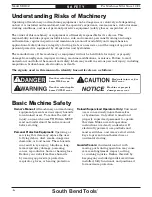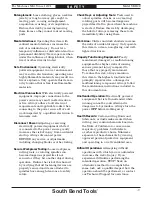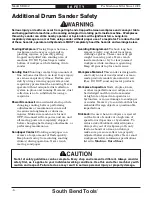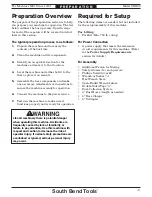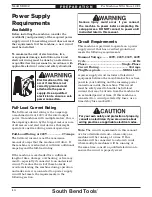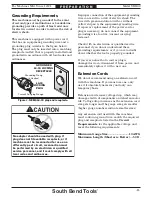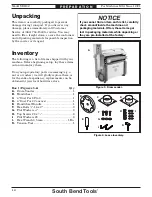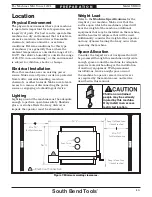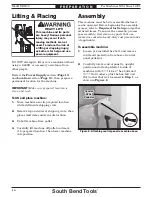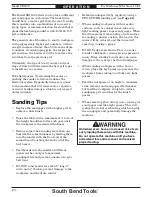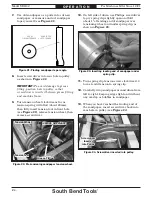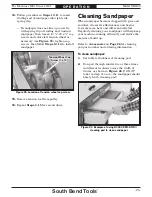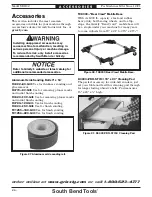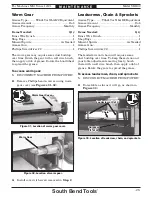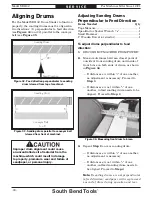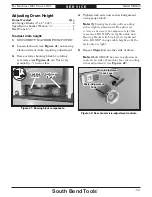
-20-
For Machines Mfd. Since 12/21
South Bend Tools
Model SB1102
O P E R A T I O N
The Model SB1102 allows you to place a different
grit sandpaper on each drum. The front drum
should have a coarser grit than the rear. Usually
this translates into combinations of successive
group types. A common selection for stock that is
planed before being sanded is a 80-100/120-150
grit combination.
The general rule of thumb is to sand a workpiece
with progressively higher grit numbers, with no
one grit increase of more than 50 from one drum
to another. Avoid skipping grits; the larger the
grit increase, the harder it will be to remove the
scratches from the previous grit.
Ultimately, the type of wood you use and your
stage of finish will determine the best grit types
to install on your sander.
Take light passes. Overloading the motor or
pushing the sander to failure weakens the
electrical system. Repeatedly doing so is abuse
to the machine that will cause motor, capacitor,
or circuit breaker damage, which is not covered
under warranty.
Sanding Tips
• Replace the sandpaper with a higher grit to
achieve a finer finish.
• Raise the table with a maximum of
1
⁄
4
turn of
the height handwheel after each pass until
the workpiece is the desired thickness.
• Reduce snipe when sanding more than one
board of the same thickness by feeding them
into the sander with the front end of the
second board touching the back end of the
first board.
• Feed boards into the sander at different
points on the conveyor to maximize
sandpaper life and prevent uneven conveyor
belt wear.
• DO NOT sand boards less than 9" long, 2"
wide, and
1
⁄
8
" thick to prevent damage to the
workpiece and the drum sander.
• Extend sandpaper life by regularly using a
PRO-STICK® sanding pad (see Page 26).
• When sanding workpieces with irregular
surfaces, such as cabinet doors, take very
light sanding passes to prevent gouges. When
the drum moves from sanding a wide surface
to sanding a narrow surface, the load on the
motor will be reduced, and the drum will
speed up, causing a gouge.
• DO NOT edge sand boards. This can cause
boards to kickback, causing serious personal
injury. Edge sanding boards also can cause
damage to the conveyor belt and sandpaper.
• When sanding workpieces with a bow or
crown, place the high point up (prevents the
workpiece from rocking) and take very light
passes.
• Feed the workpiece at an angle to maximize
stock removal and sandpaper effectiveness,
but feed the workpiece straight to reduce
sandpaper grit scratches for the finish
passes.
• When removing glue, always use a coarse grit
sand paper and take light passes. This will
reduce the risk of overheating which can plug
the sandpaper and potentially damage the
machine.
Untrained users have an increased risk of seri-
ously injuring themselves with this machine.
Do not operate this machine until you have
understood this entire manual and received
proper training.
Содержание SB1102
Страница 60: ...southbendtools com Printed In Taiwan JP21221...

